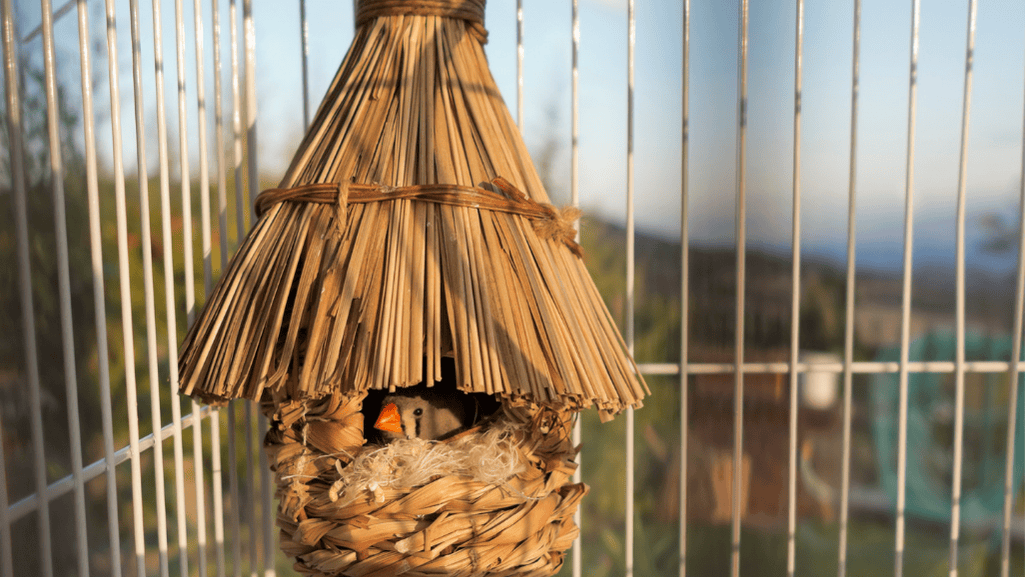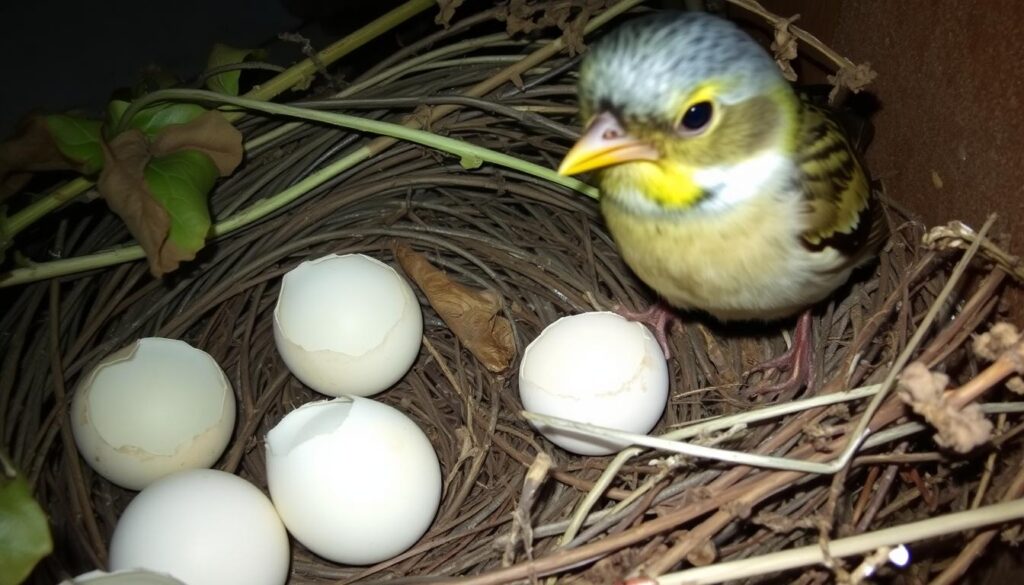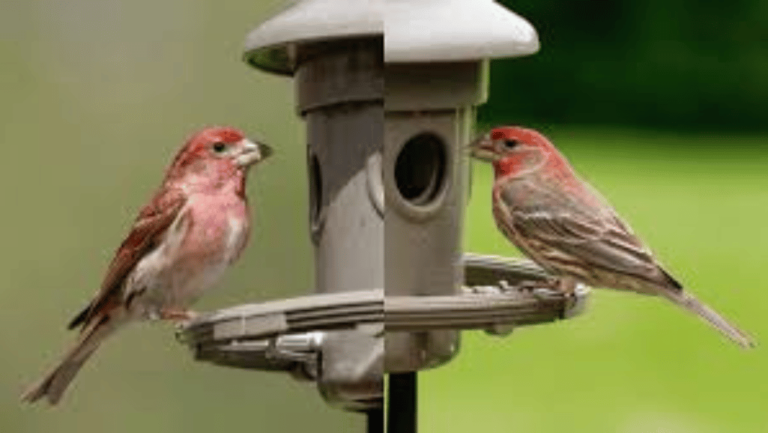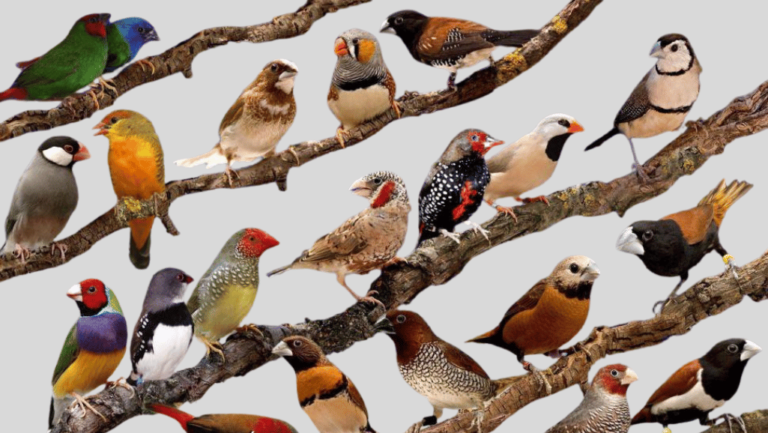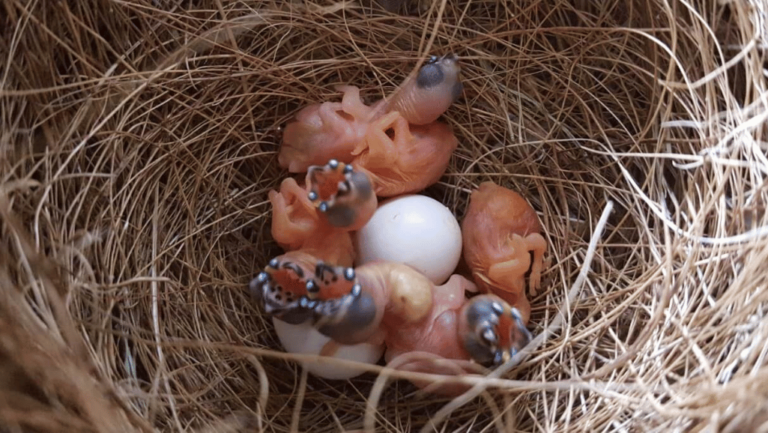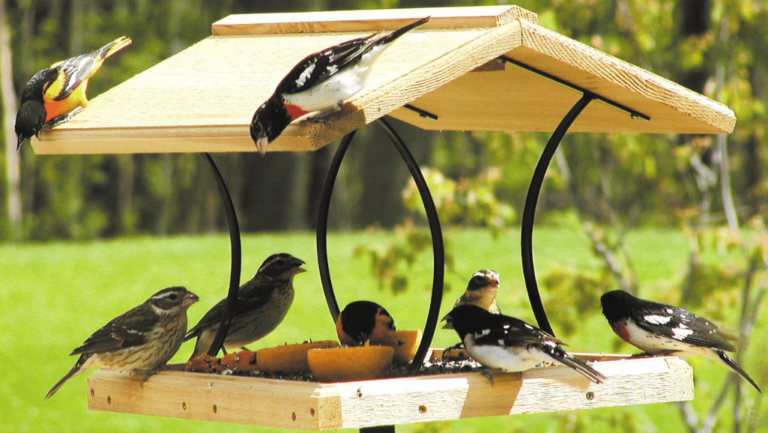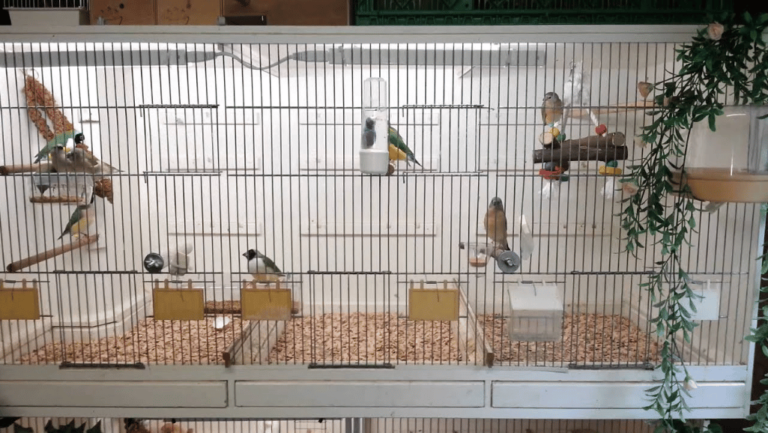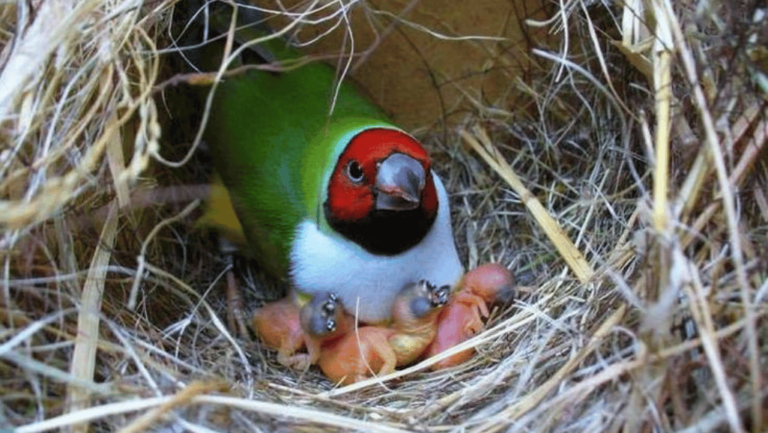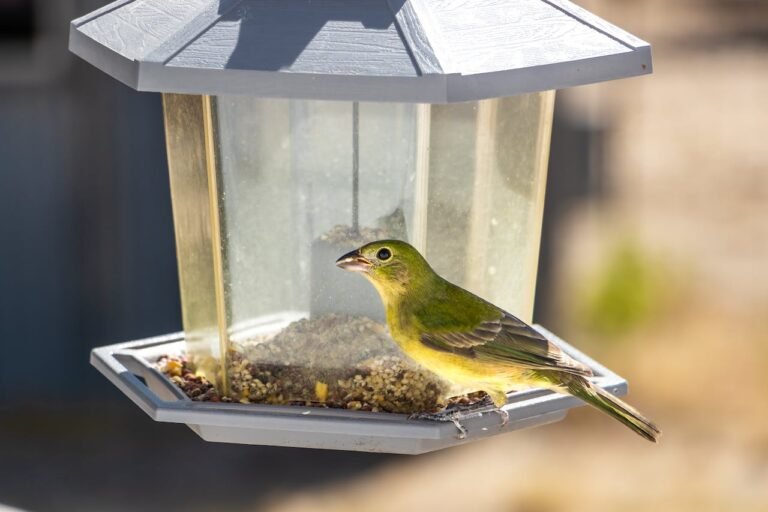When Do Finches Lay Eggs? Finches are delightful songbirds that bring joy to many bird lovers. Knowing when they breed and lay eggs is key for those wanting to attract them or keep them as pets. This guide will cover the finch reproductive cycle, including their breeding season and egg-laying habits.
The finch breeding season runs from spring to summer, with some changes based on the species and location. Most finches, like the house finch, start laying eggs in March and go until August. During this time, a pair of finches can have up to six broods, with about four eggs in each.
Finches are very careful with nest building and egg care. They often come back to the same spot each year and might use the same nest again. These nests are usually found in trees, cacti, on ledges, in buildings, or planters, often near human-made structures. Once the nest is ready and the female is set to lay eggs, she lays one egg a day until the clutch is full.
Key Takeaways
- The finch egg laying season generally occurs from March to August
- Finches can have up to six clutches per breeding season, with an average of four eggs per clutch
- Incubation of finch eggs typically lasts 14 days and is carried out by the female
- Fledgling finches leave the nest 12-19 days after hatching
- Finches often return to the same breeding area and may reuse previous nest sites
Understanding the Finch Breeding Cycle
Finches have a yearly cycle that includes molting, austerity, breeding, resting, and a juvenile phase. In the breeding season, finches show unique mating behaviors and rituals. Males do elaborate displays to draw in females, while females pick their partners based on health and foraging skills.
Factors Influencing Finch Breeding Season
Lighting, temperature, and diet are key factors that affect finch breeding and molting. Each finch species reacts differently to these cues. For instance, Lady Gouldian Finches breed when day length and temperature change, while Canaries breed with day length shifts.
Wild finches breed based on food availability and quality in their habitats. Temperature is crucial for molting and breeding in wild birds, with some species molting in spring and others after breeding.
In captivity, finch owners must create the right environment for breeding. This means changing temperatures to mimic seasons and feeding them a balanced diet for reproductive health. It’s important to avoid high-calorie diets in resting seasons to prevent obesity. Finches need exercise, especially in small cages, to stay healthy.
Signs of Finch Mating Behavior
When finches are ready to mate, they show clear signs. Males do a “butterfly flight” to attract females, flying up and gliding down while singing. They also offer food to their chosen female, showing he can feed their future young.
| Finch Mating Behavior | Description |
|---|---|
| Butterfly Flight | Male flies up and glides down while singing to attract female |
| Courtship Feeding | Male feeds female as a sign of his ability to provide |
| Pair Formation | Breeding pairs often form in winter before the official breeding season |
| Nest Building | Female begins constructing the nest, signaling impending egg laying |
| Mate Guarding | Male closely guards his mate to prevent other males from mating with her |
Females like males with bright red plumage, showing health and foraging skills. As breeding nears, finch pairs form in winter. Signs that egg laying is coming include the female building a nest and the male guarding his mate.
Finch Egg Laying Timeline
Knowing when finches lay eggs is key for breeders and fans. It helps in breeding better and keeping birds and their babies healthy. Finches have a unique finch reproduction cycle with certain egg laying habits and care from parents.
Typical Clutch Size for Finches
Finches lay different numbers of eggs, usually 3 to 6 per clutch. Some, like the Society finch, can lay up to 9 eggs. Gouldian, Cordon Bleu, and Zebra finches often lay 4 to 6 eggs. Here’s a table with clutch sizes for different finch types:
| Finch Species | Average Clutch Size | Range |
|---|---|---|
| Society Finch | 6 | 4-9 |
| Gouldian Finch | 5 | 4-6 |
| Zebra Finch | 4 | 3-6 |
| Cordon Bleu Finch | 4 | 3-5 |
Frequency of Egg Laying in Finches
Finches lay eggs from March to August, laying one egg a day, usually in the morning. The finch egg laying period ends when the clutch is full, which takes a few days. Research shows wild zebra finches often lay eggs in other birds’ nests, but captive ones rarely do.
Finch pairs can have up to 6 clutches a year, but usually, 3 succeed. How often they lay eggs and how many clutches they have depends on their health, the environment, and nesting materials. Knowing when finches lay eggs and providing the right conditions helps breeders increase their chances of successful clutches and healthy chicks.
When Do Finches Lay Eggs?
Finches are known for their bright colors and beautiful songs. They also have interesting ways of breeding. Knowing when finches lay eggs is key for caring for them. We’ll look at when wild and pet finches breed and what makes them lay eggs.
Breeding Season for Wild Finches
In the wild, finches breed in spring and summer when food is plenty and the weather is good. House finches, for example, breed from March to August, with the most breeding from April to July. But, the exact time they breed can change based on the species and where they live.
Breeding Season for Pet Finches
Pet finches might breed all year if they have the right conditions. They need lots of space, nesting materials, a good diet, and the right lighting. Knowing what your finch needs is key to breeding success.
Ideal Conditions for Finch Egg Laying
To get finches to lay eggs, create a space that feels like their natural home. Here are important things for egg laying:
- Ample space: Give finches a big cage or aviary for flying, perching, and nesting.
- Nesting materials: Offer nesting stuff like coconut fibers, soft grasses, and clean paper strips.
- Balanced diet: Make sure finches eat well with a mix of seed, fresh greens, and supplements like cuttlebone and calcium blocks.
- Adequate lighting: Keep a light cycle of 12-14 hours a day to help them breed.
Remember, different finch types have different breeding times and needs. For example, Society finches incubate eggs for about 16 days, while Zebra and Gouldian finches take 12-14 days. Knowing what your finches need is key for breeding success.
| Finch Species | Average Clutch Size | Incubation Period |
|---|---|---|
| Zebra Finch | 3-6 eggs | 12-15 days |
| Society Finch | 4-6 eggs | 16 days |
| Gouldian Finch | 4-6 eggs | 14-16 days |
By giving finches the right conditions and knowing when they breed, you can help them lay eggs successfully. Enjoy watching these amazing birds raise their young.
Finch Nesting Habits and Egg Care
Finches are known for their detailed nesting habits and caring for their young. Female finches build the nests, using finch nesting materials like grasses and hair. They place their nests in shrubs or special nest boxes.
Nesting Materials Used by Finches
Finches gather various items for their nests. They use:
- Grass stems and blades
- Thin twigs and small branches
- Soft plant fibers and mosses
- Animal hair and feathers
- Cotton and other soft materials
Incubation Period for Finch Eggs
After laying eggs, the female starts incubation. The time varies by species, but it’s usually 12 to 16 days. The female keeps the eggs warm. Sometimes, the male helps during the day, letting the female rest.
| Finch Species | Incubation Period |
|---|---|
| House Finch | 13-14 days |
| Zebra Finch | 12-15 days |
| Gouldian Finch | 14-16 days |
| Society Finch | 14-16 days |
Parental Care of Finch Eggs and Chicks
Finches show great dedication in raising their young. Both parents care for the eggs and chicks. After hatching, the chicks rely on their parents for everything. They are born naked and helpless.
The parents keep the nest clean and feed the chicks. As the chicks grow, they start to demand more food. The parents keep feeding them until they leave the nest, usually in 12 to 20 days.
Even after the young birds leave, the male may still feed and support them for another two weeks. This helps them survive in the wild.
Common Issues with Finch Egg Laying
Finches are known for their ability to breed easily, but they can face some challenges during egg-laying. Issues like infertile eggs and egg binding are common. It’s important for finch owners to know about these problems and how to handle them.
Infertile or Unhatched Finch Eggs
Finch breeders often face the issue of finch eggs not hatching. This can happen for many reasons, like the eggs being infertile or the shells being too thin. To check if an egg has an embryo, you can use a bright light source for candling finch eggs.
To help prevent eggs from not hatching, make sure your finches eat a balanced diet with plenty of calcium. Also, give them good nesting materials and a calm place to live. Letting the hen sit on fake eggs for a bit can also help reduce the number of eggs she lays, which is good for her health.
Egg Binding in Finches
Egg binding is a big problem for finches. It means the egg gets stuck inside the hen. This can be very serious and needs a vet right away. Signs of an egg bound finch include being very tired, having fluffed-up feathers, hard breathing, and a big belly.
To stop egg binding, make sure your finches eat foods high in calcium and have good nesting spots. Soft shelled finch eggs often mean they don’t have enough calcium. Giving them cuttlebone or calcium supplements can help keep their calcium levels up.
| Issue | Causes | Prevention |
|---|---|---|
| Unhatched Eggs | Infertility, inadequate incubation, thin shells, parental neglect | Balanced diet, suitable nesting materials, stress-free environment, candling eggs |
| Egg Binding | Calcium deficiency, unsuitable nesting receptacles, stress | Calcium-rich diet, appropriate nesting sites, stress reduction, veterinary care |
To lessen these finch egg problems, watch your breeding finches closely. Make sure they have a good place to live, eat well, and get the care they need. By doing this, you can help your finches have a successful egg-laying experience and enjoy being parents.
Conclusion
Learning about finch egg laying season and their breeding habits is key for bird fans and those wanting to raise baby finches. Finches breed in spring and summer, with timing varying by species and environment. Spotting nesting signs like increased activity and gathering materials helps owners get ready to care for their finches.
For successful finch breeding, good food, the right nesting spots, and a calm home are crucial. Clutches usually have 4-6 eggs per nest. Taking care of finch eggs means watching them closely but not too much, as they incubate for 12-15 days. After hatching, chicks grow fast, doubling their weight every day and leaving the nest in 22-26 days, depending on the type.
Raising baby finches is fulfilling but requires hard work and careful attention. From giving them the right nesting materials to watching their growth, each step is important for their success. Knowing about finch breeding behavior and their needs helps bird lovers support these beautiful birds in the wild and at home.





